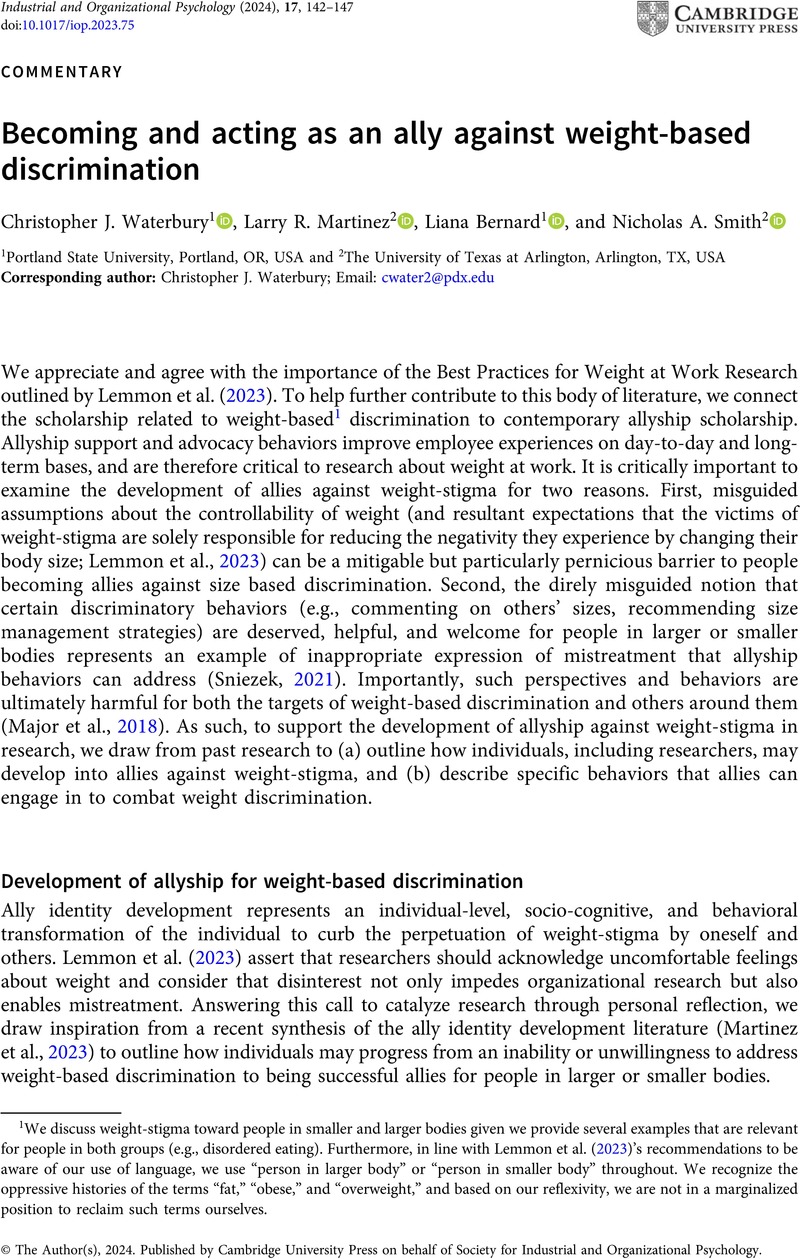Crossref Citations
This article has been cited by the following publications. This list is generated based on data provided by Crossref.
Johnson, Brielle N.
Hunger, Jeffrey M.
Sawhney, Gargi
and
Kunstman, Jonathan W.
2024.
Weight in the Workplace: Weight Discrimination Impacts Professional Outcomes as a Function of Social Pain Minimization.
Occupational Health Science,



